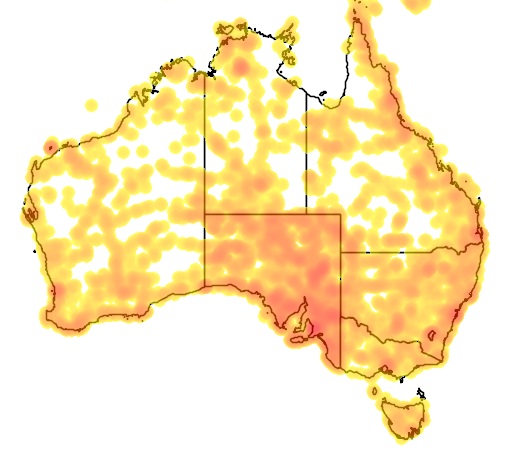|
Iridomyrmex Infuscus
''Iridomyrmex infuscus'' is a species of ant in the genus ''Iridomyrmex''. Described by Heterick and Shattuck in 2011, the species is known only from a single specimen collected in the Australian Capital Territory. Etymology The species name derives from the Latin Latin (, or , ) is a classical language belonging to the Italic branch of the Indo-European languages. Latin was originally a dialect spoken in the lower Tiber area (then known as Latium) around present-day Rome, but through the power ... language, which translates as 'dark brown' or 'blackish', in reference to the species appearance. References Iridomyrmex Hymenoptera of Australia Insects described in 2011 {{Iridomyrmex-stub ... [...More Info...] [...Related Items...] OR: [Wikipedia] [Google] [Baidu] |
Iridomyrmex
''Iridomyrmex'' is a genus of ants called rainbow ants (referring to their blue-green iridescent sheen) first described by Austrian entomologist Gustav Mayr in 1862. He placed the genus in the subfamily Dolichoderinae of the family Formicidae. It has 79 described species and five fossil species. Most of these ants are native to Australia; others are found in Asia and Oceania, and they have been introduced to Brazil, New Zealand, and the United Arab Emirates. Fossil species are known from China, France, and the United States. These ants are known to be an ecologically dominant and important group of ants, but they are sometimes regarded as pests because they disturb soil and enter human houses. Farmers in rural Australia place animal carcasses on meat ant ('' I. purpureus'') mounds as a method of disposing of them; meat ants consume the carcass and reduce it to bones in a matter of weeks. Meat ants also engage in ritualised fighting, which helps prevent casualties and solv ... [...More Info...] [...Related Items...] OR: [Wikipedia] [Google] [Baidu] |
Australian Capital Territory
The Australian Capital Territory (commonly abbreviated as ACT), known as the Federal Capital Territory (FCT) until 1938, is a landlocked federal territory of Australia containing the national capital Canberra and some surrounding townships. It is located in southeastern Australian mainland as an enclave completely within the state of New South Wales. Founded after Federation as the seat of government for the new nation, the territory hosts the headquarters of all important institutions of the Australian Government. On 1 January 1901, federation of the colonies of Australia was achieved. Section 125 of the new Australian Constitution provided that land, situated in New South Wales and at least from Sydney, would be ceded to the new federal government. Following discussion and exploration of various areas within New South Wales, the '' Seat of Government Act 1908'' was passed in 1908 which specified a capital in the Yass-Canberra region. The territory was transferred to ... [...More Info...] [...Related Items...] OR: [Wikipedia] [Google] [Baidu] |
Latin
Latin (, or , ) is a classical language belonging to the Italic branch of the Indo-European languages. Latin was originally a dialect spoken in the lower Tiber area (then known as Latium) around present-day Rome, but through the power of the Roman Republic it became the dominant language in the Italian region and subsequently throughout the Roman Empire. Even after the fall of Western Rome, Latin remained the common language of international communication, science, scholarship and academia in Europe until well into the 18th century, when other regional vernaculars (including its own descendants, the Romance languages) supplanted it in common academic and political usage, and it eventually became a dead language in the modern linguistic definition. Latin is a highly inflected language, with three distinct genders (masculine, feminine, and neuter), six or seven noun cases (nominative, accusative, genitive, dative, ablative, and vocative), five declensions, four ... [...More Info...] [...Related Items...] OR: [Wikipedia] [Google] [Baidu] |
Hymenoptera Of Australia
Hymenoptera is a large order of insects, comprising the sawflies, wasps, bees, and ants. Over 150,000 living species of Hymenoptera have been described, in addition to over 2,000 extinct ones. Many of the species are parasitic. Females typically have a special ovipositor for inserting eggs into hosts or places that are otherwise inaccessible. This ovipositor is often modified into a stinger. The young develop through holometabolism (complete metamorphosis)—that is, they have a wormlike larval stage and an inactive pupal stage before they mature. Etymology The name Hymenoptera refers to the wings of the insects, but the original derivation is ambiguous. All references agree that the derivation involves the Ancient Greek πτερόν (''pteron'') for wing. The Ancient Greek ὑμήν (''hymen'') for membrane provides a plausible etymology for the term because species in this order have membranous wings. However, a key characteristic of this order is that the hindwings are con ... [...More Info...] [...Related Items...] OR: [Wikipedia] [Google] [Baidu] |



